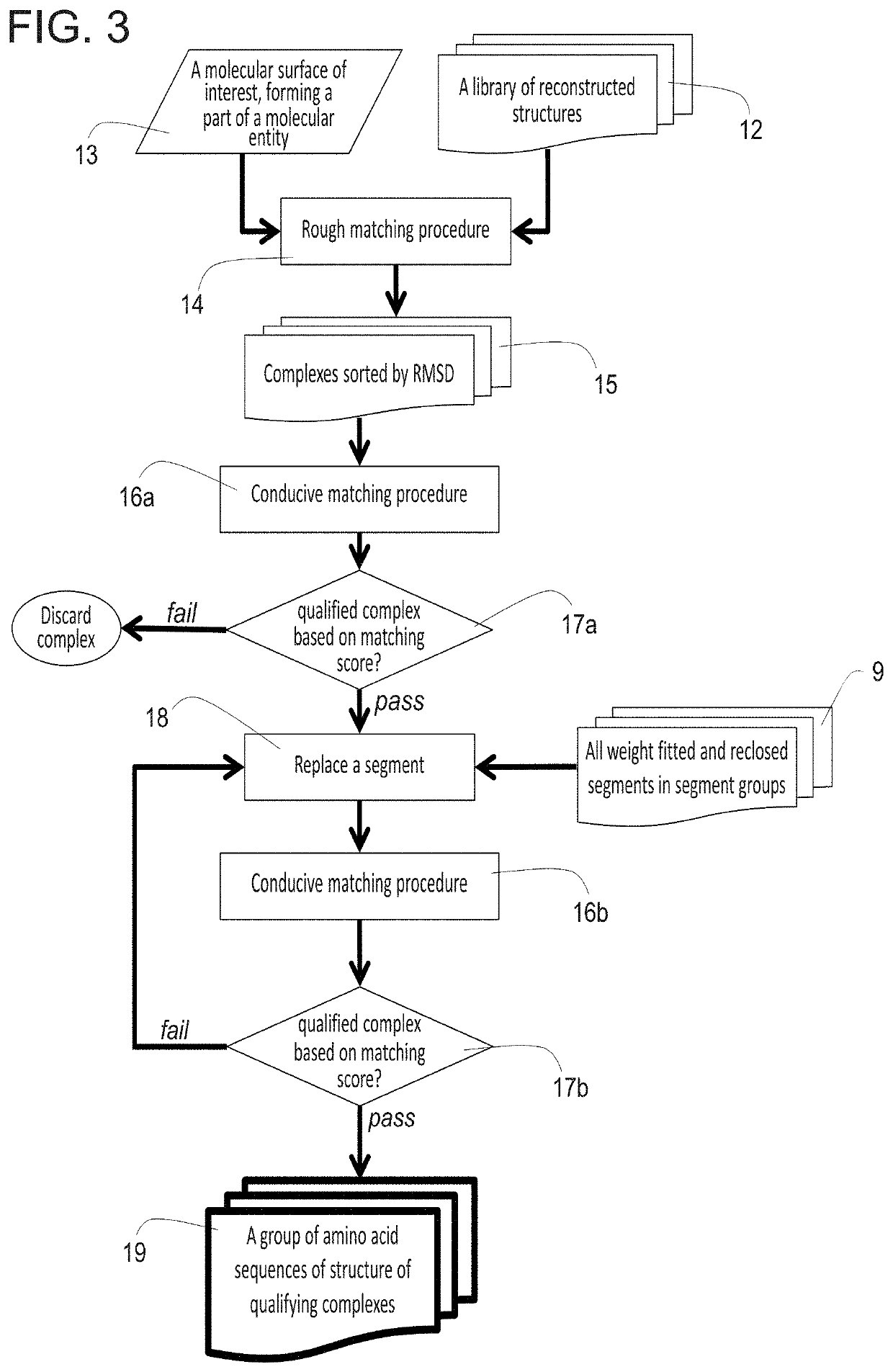Method of computational protein design
a protein design and computational technology, applied in the field of computational chemistry and computational protein design, can solve the problems of insufficient maturity of computational tools for protein design, challenges modern science, and fundamental limitations of approaches to achieve the effect of low energy scor
- Summary
- Abstract
- Description
- Claims
- Application Information
AI Technical Summary
Benefits of technology
Problems solved by technology
Method used
Image
Examples
example 1
Designed Antibody—An Exemplary Procedure
[0327]Template Antibody:
[0328]As described hereinabove, two pre-computational steps in the method, according to some embodiments of the present invention, involve creating the conformation database. The database can only be used with the arbitrary template antibody it was created for. For the results presented herein, the anti-fluorescein antibody 4m5.3 (PDB ID 1X9Q) was used; however, it is noted that any arbitrary antibody template can be used.
[0329]Generating PSSM and Backbone Conformation Database:
[0330]The first step in the procedure, according to some embodiments of the present invention, is the parsing of the source antibodies into segments and grouping the segments according to length. 788 variable light κ chains and 785 variable heavy-chain source antibody structures constituted the collection of all source antibodies that were used in the example presented below.
[0331]As discussed hereinabove, the segmentation of the Fv fragments of ...
example 2
Designed Antibody—A Recapitulation Benchmark
[0485]To test the ability of the method, according to some embodiments of the present invention, to predict the structures and sequences of protein-binding antibodies, a diverse benchmark of nine high-affinity (Kd<10 nM), high-resolution (X-ray resolution <2.5 Å), protein-binding antibodies were selected using the Structural Antibody Database “SAbDab” (see, Table 5 below).
[0486]The natural antibody set comprises human antibodies Fab40,D5 neutralizing mAb, and BO2C11 (PDB IDs 3K2U, 2CMR and 1IQD respectively), murine antibodies E8, D1.3 mAb, F10.6.6, JEL42, and 5E1 Fab (PDB IDs 1WEJ, 1VFB, 1P2C, 2JEL and 3MXW respectively), and the humanized murine antibody D3H44 (PDB ID 1JPS). The target molecule comprise convex (2JEL, 1IQD), flat (1P2C), and concave (3MXW) surfaces, containing helical (2CMR), sheet (1JPS), and loop (1P2C, 3K2U) secondary-structural elements.
[0487]The benchmark recapitulation test has started from the set of 4,500 computat...
example 3
Expression of De-Novo Designed Antibody
[0498]By use of the method described herein, thousands of protein sequences were obtained, out of which 19 have been chosen for experimental expression and activity testing. The amino acid sequences were transcribed into DNA as single-chain variable fragments with GS-linkers connecting the C-terminus of the VH chain to the N-terminus of the VL chain, codon optimized for expression in the baker's yeast S. cerevisiae. After external custom synthesis, the DNA segments with upstream and downstream flanking regions were amplified by PCR and inserted into the pETCON plasmid by homologous recombination in S. cerevisiae strain EBY100. The obtained plasmid was verified by sequencing and used for testing in yeast-surface display, where expression is monitored by fluorescent staining of the designed antibody while ligand recognition was monitored by fluorescent labeling of the biotinylated ligand.
[0499]The relatively low affinity of the initial designs wa...
PUM
 Login to View More
Login to View More Abstract
Description
Claims
Application Information
 Login to View More
Login to View More - R&D
- Intellectual Property
- Life Sciences
- Materials
- Tech Scout
- Unparalleled Data Quality
- Higher Quality Content
- 60% Fewer Hallucinations
Browse by: Latest US Patents, China's latest patents, Technical Efficacy Thesaurus, Application Domain, Technology Topic, Popular Technical Reports.
© 2025 PatSnap. All rights reserved.Legal|Privacy policy|Modern Slavery Act Transparency Statement|Sitemap|About US| Contact US: help@patsnap.com



